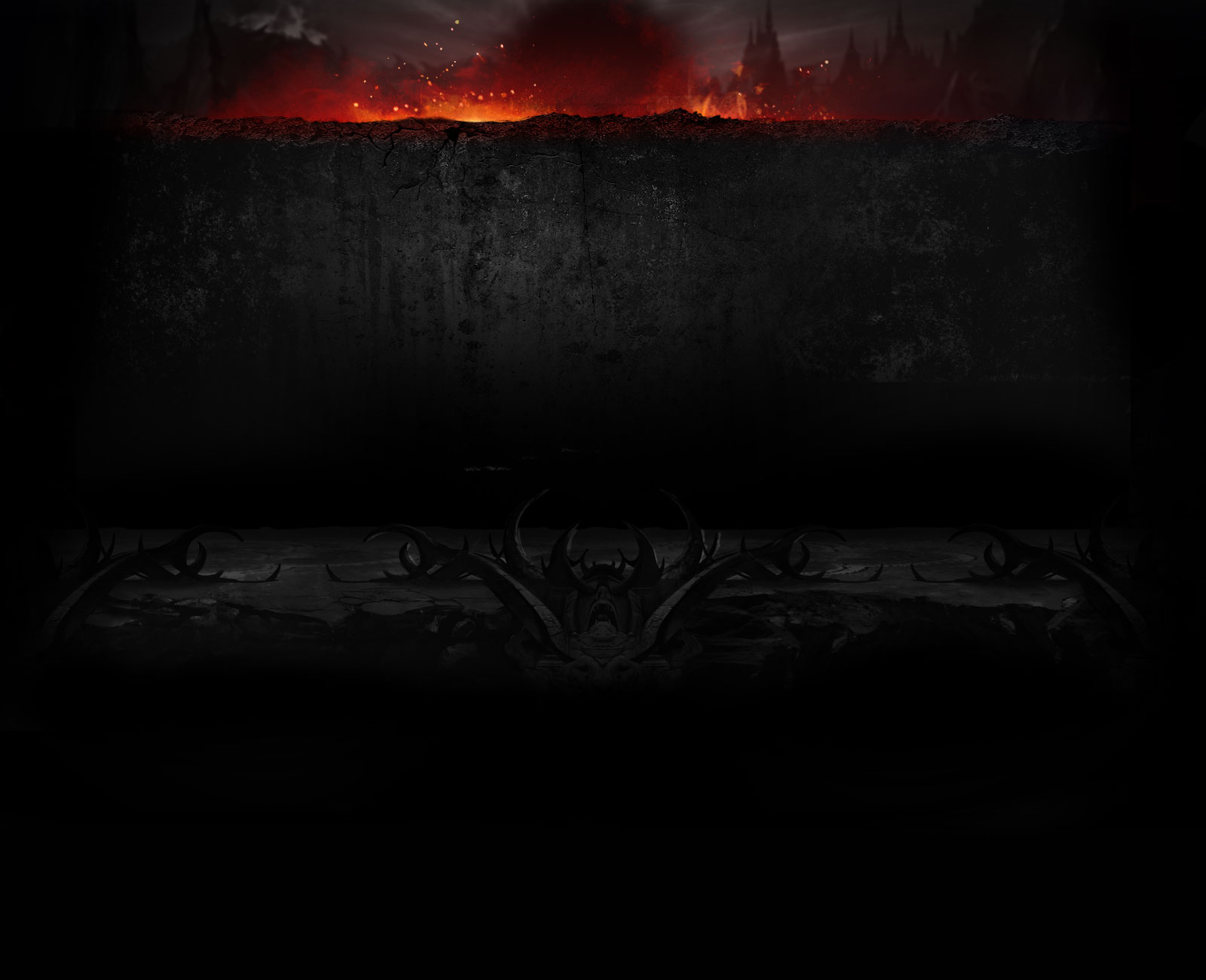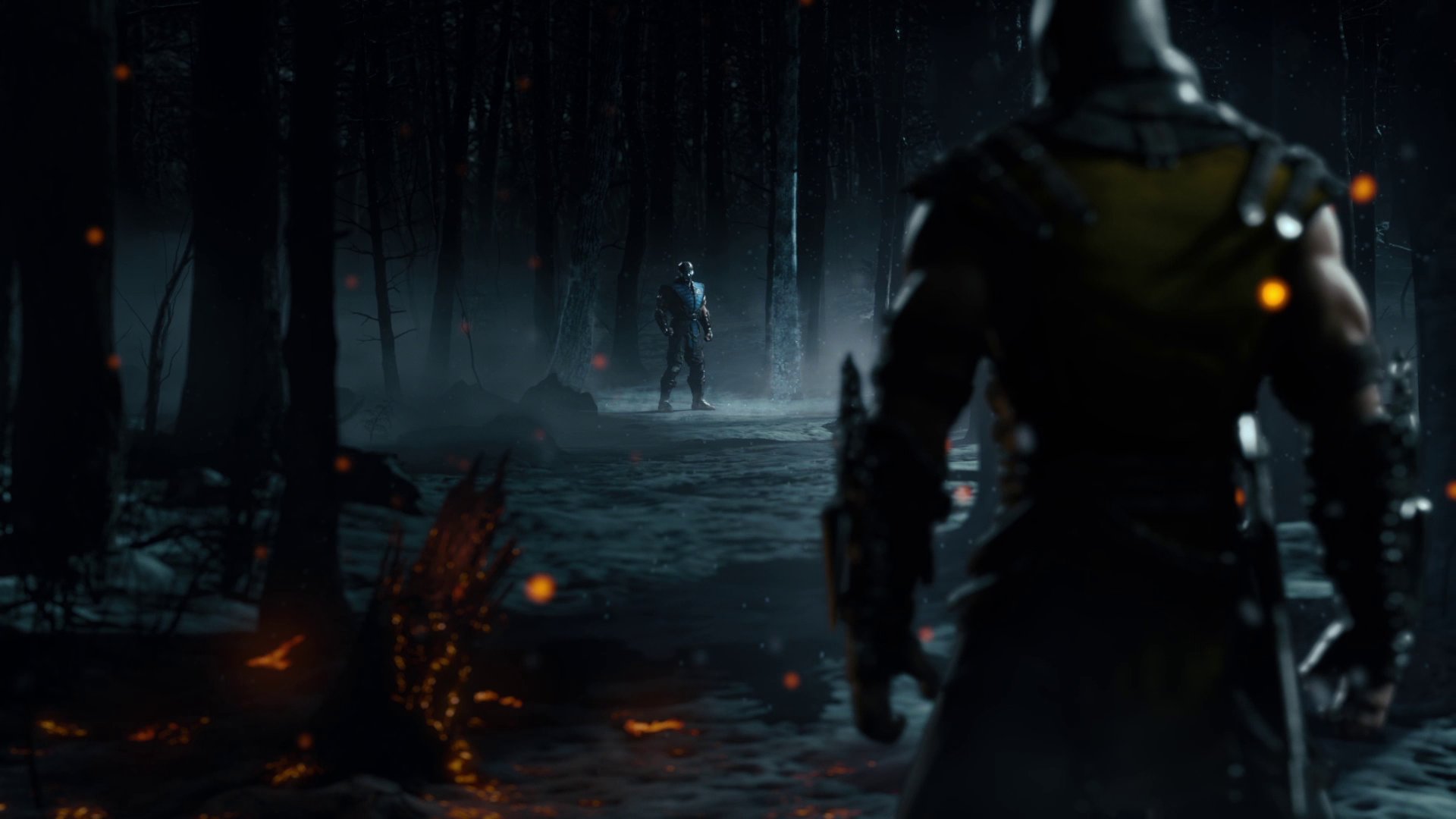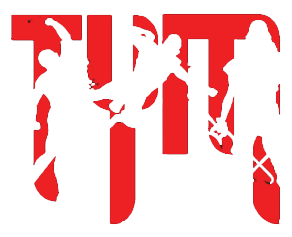MadeOfMetal
Kenshi Srubtastic,Cyrax, Special Forces Mains
i collected data from the web and bonded info together to find an easy way for all of us to calculate frame data. ive herd there is some of us that don't think every move is correct... so here is how you all can do this for your self. most of the concept is based on Soul Calibur but i feel that it is indeed relevant in this game. same basic concepts.
my goal here is to get everyone here to understand frame data and to be able to test it for them self.
NRS has been very good this time around at keeping it accurate. when i find a flaw in their data after patch, i find within several days it will be corrected. on each small hot fix they release.
even though they update it. this doesn't mean that we shouldn't understand how to find what is incorrect for the short time we are blind.
There are two methods that i can vouch for for testing frame data:
Frame Counting Method
The things you will need for this method are:
Now for the Semantics of this method:
1) set up your capture card, and capture settings:
this will typically vary, depending on what kind of capture card you have. simply follow the instructions, and then hook the capture card up to your TV/console, using cable splitters as neccessary. Start your game, and open your video capture software, make sure if you can, that you choose to record at 60fps. if you cannot, 30fps will do, but your data will not be as accurate, and will require verification later on.
2) start recording
now for this one, i reccomend you give it at minute to buffer after you start recording to make sure that you dont get lag or dropped frames. after this, you'll want to test the speed of each move. just hitting the opponent will be fine. try to test each move at least 5 times on video, so that just incase one time drops a frame or such, you have 4 other test results that you can validate with. just simply go through all of your characters moves, testing in a manner such as this:
3,,3, 3, 3, 3, 4... , 4, 4, 4, 4...
until you have a recorded result of all the moves your character has
*note: if a move has multiple hits in a string, you need only to test the first hit of the string for speed.
3) breaking down the data into frames
now this is a bit tedious, but by no means difficult, just time consuming. what you do now, is open your recorded video into your video editing software, and simply advance the video frame by frame, and count the number of frames from move initialization to move impact. that will be the speed of the move. in this situation, recording at 60fps is very very useful since it will give you exact results, but if you recorded at 30fps, you will have to take your results and multiply them by two(which will give you all even numbers unfortunately) however once this is all done, and you have recorded all of your results (check them over to make sure you havent missed anything) you will now have the impact/speed values for all the moves*.
*note: if you recorded at 30fps, you will also need to verify impact frames with the collision method.
Frame Collision Method
The things you will need for this method are:
finding the speed of a move: the best way to do this is to use the record command function in practice mode.
(note that for some moves you will have to tap G before executing the recording to allow it to buffer through hit/blockstun) to record the move you want to test. then you set up the practice dummy in freestyle and have the dummy set up in the following manner:
action 1 - standing guard all/standing normal
action 2 - command start #1, 2 or 3
next, you trigger the dummy to input your command by hitting it with a move, preferably a move that is neutral on grd or neutral on hit(both methods are good for different situations) and then input a move after to see if the two moves collide.
a useful trick for finding frames that are inbetween that of your test character(for example i18, but say your test character only has an i17 and an i19) is to a move that is slightly +on hit or grd to compensate for the speed, then test until you collide and subtract the +frames of your trigger move from the end collision speed of your opponents move(or if your using disadvantage to test, simply add the frames)
For testing stances, you'll want to use a neutral move to initiate. have the recorded command enter stance, and then attack. in order to find the speed of the transition, you'll have to keep hitting the opponent until you get CH, to find what the slowest move you can hit them with is before getting counter hit, and that is the speed of the transition.
finding the grd frames of a move: first what you'll want to do 44 guard your dummy's move. then try to punish with one of the known impact frame values that you know(note that you may need to use more than one character for such)simply start with K(i13)(or in some cases i10 or i11 AA) in an attempt to punish. if K punishes, try to punish with a slower move, such as an i14, i15 and so on until you cannot punish anymore. if K doesnt punish, have your opponent use a move after(in most cases K) which will come out at disadvantage(so if the move was not K punishable, its at most -12 on block, which means the opponents K will come out at i25 and thusly colliding with i25 moves, telling you the move is -12 ie. i25 total - i13K = -12 disadvantage.) the same method can also be used to see how much advantage a move gives, although in these cases you'll want your opponent to use much slower moves to go against your i13K. this also comes in handy for finding GI, TC, TS, and TJ frames.
finding the frames of a move on hit and CH: same as above.
when testing frame data, generally, you have achieved a result when you get the following: collision, clash, or break.
Range values:
some moves have multiple impact, hit and grd values depending on what range/position they are executed from. generally a good rule of thumb is: the further away from the origin, the slower the impact frames are, but the better the hit/grd frames are, and vice versa. note however that there are exceptions to this rule (such as Siegfried's b6 in SoulCaliburIV) to get accurate results for range values, you'll want to test moves that give inconsistent values at short, mid, and long range from the point of origin, when applicable. that way you will be able to get more accurate move properties.
*NOTE: when testing frame data, it is almost always best to test near a wall to eliminate any possible range values. plus it makes punishing easier. try to test using kick attacks when possible.
also note that there may be some moves in the game that generally break all of the rules of testing, and may require special testing methods. this however goes on a case by case basis, and is extremely uncommon. Breath boxes do fluctuate results so you need to manipulate the breath box with corner. there is also male and female differences in MKX
Like run speed/forward dash/backward dash and so on
Hopefully you found this tutorial useful! Please feel free to let me know if i missed anything.
even though this guide is for soul caliber it works with mkx...
@Eddy Wang
tag anyone you think this would help
some free helpful tools:
here is a link to my ongoing work in progress: frame data for mkx
http://testyourmight.com/threads/all-characters-single-move-run-in-frame-data-by-ranking-order.54206/#post-1812585
my goal here is to get everyone here to understand frame data and to be able to test it for them self.
NRS has been very good this time around at keeping it accurate. when i find a flaw in their data after patch, i find within several days it will be corrected. on each small hot fix they release.
even though they update it. this doesn't mean that we shouldn't understand how to find what is incorrect for the short time we are blind.
i personally use gimp a lot... its harder but free.
you can convert video into sprites which on gimp can be made into an animation, that way you can cycle through each frame. i record with PS4 DVR and here XB1 is just as good if not better. they both record in 720p 60fps
you can convert video into sprites which on gimp can be made into an animation, that way you can cycle through each frame. i record with PS4 DVR and here XB1 is just as good if not better. they both record in 720p 60fps
- Impact/speed - the number of frames a move takes to hit from when you input it, to the moment it hits.
- RV/range values - where a move has multiple differences in its frame properties depending on how close or far away the other character is, or similar circumstances.
- fps (frames per second) - the amount of images that cycle on screen in a single second. generally in video games, the game runs at 60fps(cycles through 60 images on screen in one second)
- GRD - guard/block
- JG - Just Guard
- IMP - impact
- CH - counter hit/reversal
- GB - guard burst
i recorded everyones run from the same map at same start point to the same end point, i call this Point A to Point B.
then i used software to time is 1/1000 seconds from point to point. then i converted it to 1/100 then converted to 1/60 which is frames. 1/.100 is far more accurate than frames! the tricky part was each character had different startups... those differences where: Delayed/Accelerated/and exact.
delayed= they move slower at startup for x amount of frames untill they reach full speed.
Accelerated= they move faster then normal run speed at startup.
Exact= no difference in startup from mid point run.
how to calculate DA&E into run speed results.
as we know the first part of run varries between characters. so you go to a middle point where everyone is at full run speed.
test from there save results.
then test every startup, and calculate the difference into the mid point findings. that way it eleminates startup differences.
how to do this you ask.
draw a line on gimp from point a to point b of startup frames. make dots on each end. then drag to mid point and test across to find difference in speeds!
hope this helped anyone.
then i used software to time is 1/1000 seconds from point to point. then i converted it to 1/100 then converted to 1/60 which is frames. 1/.100 is far more accurate than frames! the tricky part was each character had different startups... those differences where: Delayed/Accelerated/and exact.
delayed= they move slower at startup for x amount of frames untill they reach full speed.
Accelerated= they move faster then normal run speed at startup.
Exact= no difference in startup from mid point run.
how to calculate DA&E into run speed results.
as we know the first part of run varries between characters. so you go to a middle point where everyone is at full run speed.
test from there save results.
then test every startup, and calculate the difference into the mid point findings. that way it eleminates startup differences.
how to do this you ask.
draw a line on gimp from point a to point b of startup frames. make dots on each end. then drag to mid point and test across to find difference in speeds!
hope this helped anyone.
There are two methods that i can vouch for for testing frame data:
- Frame Counting Method - Requires a Video Capture Card, a PC, and a video editing program. or animation program such as gimp
- Frame Collision Method - Requires some existing frame data to test with
Frame Counting Method
The things you will need for this method are:
- a video capture card or similar device that allows you to capture video from your console(ps3 or 360)(usually comes with some kind of video capture software)you can use Ps4 or XB1's built in recorder, its a new day in age

- a pc, almost any will do, it doesnt have to be extraordinary
- some video editing software
Now for the Semantics of this method:
1) set up your capture card, and capture settings:
this will typically vary, depending on what kind of capture card you have. simply follow the instructions, and then hook the capture card up to your TV/console, using cable splitters as neccessary. Start your game, and open your video capture software, make sure if you can, that you choose to record at 60fps. if you cannot, 30fps will do, but your data will not be as accurate, and will require verification later on.
2) start recording
now for this one, i reccomend you give it at minute to buffer after you start recording to make sure that you dont get lag or dropped frames. after this, you'll want to test the speed of each move. just hitting the opponent will be fine. try to test each move at least 5 times on video, so that just incase one time drops a frame or such, you have 4 other test results that you can validate with. just simply go through all of your characters moves, testing in a manner such as this:
3,,3, 3, 3, 3, 4... , 4, 4, 4, 4...
until you have a recorded result of all the moves your character has
*note: if a move has multiple hits in a string, you need only to test the first hit of the string for speed.
3) breaking down the data into frames
now this is a bit tedious, but by no means difficult, just time consuming. what you do now, is open your recorded video into your video editing software, and simply advance the video frame by frame, and count the number of frames from move initialization to move impact. that will be the speed of the move. in this situation, recording at 60fps is very very useful since it will give you exact results, but if you recorded at 30fps, you will have to take your results and multiply them by two(which will give you all even numbers unfortunately) however once this is all done, and you have recorded all of your results (check them over to make sure you havent missed anything) you will now have the impact/speed values for all the moves*.
*note: if you recorded at 30fps, you will also need to verify impact frames with the collision method.
Frame Collision Method
The things you will need for this method are:
- some existing frame data to cross reference with(preferably multiple characters, or characters that have little or no RV's)
finding the speed of a move: the best way to do this is to use the record command function in practice mode.
(note that for some moves you will have to tap G before executing the recording to allow it to buffer through hit/blockstun) to record the move you want to test. then you set up the practice dummy in freestyle and have the dummy set up in the following manner:
action 1 - standing guard all/standing normal
action 2 - command start #1, 2 or 3
next, you trigger the dummy to input your command by hitting it with a move, preferably a move that is neutral on grd or neutral on hit(both methods are good for different situations) and then input a move after to see if the two moves collide.
a useful trick for finding frames that are inbetween that of your test character(for example i18, but say your test character only has an i17 and an i19) is to a move that is slightly +on hit or grd to compensate for the speed, then test until you collide and subtract the +frames of your trigger move from the end collision speed of your opponents move(or if your using disadvantage to test, simply add the frames)
For testing stances, you'll want to use a neutral move to initiate. have the recorded command enter stance, and then attack. in order to find the speed of the transition, you'll have to keep hitting the opponent until you get CH, to find what the slowest move you can hit them with is before getting counter hit, and that is the speed of the transition.
finding the grd frames of a move: first what you'll want to do 44 guard your dummy's move. then try to punish with one of the known impact frame values that you know(note that you may need to use more than one character for such)simply start with K(i13)(or in some cases i10 or i11 AA) in an attempt to punish. if K punishes, try to punish with a slower move, such as an i14, i15 and so on until you cannot punish anymore. if K doesnt punish, have your opponent use a move after(in most cases K) which will come out at disadvantage(so if the move was not K punishable, its at most -12 on block, which means the opponents K will come out at i25 and thusly colliding with i25 moves, telling you the move is -12 ie. i25 total - i13K = -12 disadvantage.) the same method can also be used to see how much advantage a move gives, although in these cases you'll want your opponent to use much slower moves to go against your i13K. this also comes in handy for finding GI, TC, TS, and TJ frames.
finding the frames of a move on hit and CH: same as above.
when testing frame data, generally, you have achieved a result when you get the following: collision, clash, or break.
Range values:
some moves have multiple impact, hit and grd values depending on what range/position they are executed from. generally a good rule of thumb is: the further away from the origin, the slower the impact frames are, but the better the hit/grd frames are, and vice versa. note however that there are exceptions to this rule (such as Siegfried's b6 in SoulCaliburIV) to get accurate results for range values, you'll want to test moves that give inconsistent values at short, mid, and long range from the point of origin, when applicable. that way you will be able to get more accurate move properties.
*NOTE: when testing frame data, it is almost always best to test near a wall to eliminate any possible range values. plus it makes punishing easier. try to test using kick attacks when possible.
also note that there may be some moves in the game that generally break all of the rules of testing, and may require special testing methods. this however goes on a case by case basis, and is extremely uncommon. Breath boxes do fluctuate results so you need to manipulate the breath box with corner. there is also male and female differences in MKX
Like run speed/forward dash/backward dash and so on
Hopefully you found this tutorial useful! Please feel free to let me know if i missed anything.
even though this guide is for soul caliber it works with mkx...
@Eddy Wang
tag anyone you think this would help
some free helpful tools:
here is a link to my ongoing work in progress: frame data for mkx
http://testyourmight.com/threads/all-characters-single-move-run-in-frame-data-by-ranking-order.54206/#post-1812585
Last edited:





